Dear pack leaders and paw-rents, today in this article we will show you in great details, how do dogs detect seizures and transform lives with their sixth sense! Like human prodigies, seizure-alert dogs are born with a gift honed by partnership and purpose.
Imagine a furry guardian angel who can sense danger before it strikes, a companion whose nose knows when your body is about to betray you. For millions living with epilepsy, this isn’t fantasy, it’s reality. Seizure-alert dogs have captured global attention for their seemingly magical ability to predict epileptic episodes, giving their humans precious moments to find safety. But behind the media hype lies a complex interplay of biology, bond, and pure dog brilliance.
These remarkable dogs don’t wear capes, but they perform heroics daily. From nudging a caregiver to activating emergency buttons, they bridge the gap between medical technology and natural intuition. Yet misconceptions abound. Many believe these skills can be trained like “sit” or “stay,” but the truth is far more fascinating.

HOW DO DOGS DETECT SEIZURES THROUGH THEIR OLFACTORY SUPERPOWER AND WHY THIS MATTERS FOR EPILEPTIC FAMILIES?
Dogs boast an odor detection capacity that dwarfs our human senses, allowing them to pick up molecular whispers. Recent breakthroughs reveal that epileptic episodes emit a unique chemical signature in sweat and breath. This early warning system has the power to transform lives by giving patients crucial seconds to seek safety. Understanding this canine sixth sense deepens our bond and highlights why responsible training and emotional support go hand in paw.
While humans might notice overpowering body odor, dogs perceive a symphony of scents imperceptible to us. Their noses house up to 300 million olfactory receptors (compared to our mere 6 million), paired with a brain region dedicated to smell 40 times larger than ours proportionally.
How Do Dogs Single Out Those Pre-Seizure Molecules and Detect Seizures When Their Noses Sift Through Countless Scent Profiles?
This phenomenon is akin to a silent alarm, powered by the dog’s ability to sense volatile organic compounds that humans can’t perceive. Researchers have gathered sweat and breath samples before, during, and after seizures to train dogs in controlled studies. Over time, the dogs learned to differentiate these scent profiles with astonishing accuracy.
The results show that our canine friends might be tuning into a pre-seizure odor signature. This preliminary odor code can occur up to a full minute before symptoms manifest. Understanding this process opens doors to new training protocols for service dogs.
How Do Dogs Detect Seizures By Pairing Scent Recognition With Conditioned Behaviors Until Alert Cues Become Second Nature?
Training a seizure-alert dog often begins with scent imprinting: dogs receive positive reinforcement for identifying a pad impregnated with a pre-seizure odor. Next, trainers introduce simulated seizure scenarios, rewarding the dog for correctly alerting its handler. Over time, this dual approach cements a link between scent detection and alert behaviors like pawing and fetching a phone.
Labrador Retrievers and Golden Retrievers are frequently chosen for this work owing to their steady temperament and eagerness to please. Case files from nonprofit service dog trainers illustrate impressive success rates: over 80% of scent-trained dogs provided advance notices of 45 seconds on average. As awareness grows, more families ask themselves why is my dog so clingy when they latch onto this calling to guard and care.
Highlighting An Innate Predisposition: How Some Dogs Without Formal Instructions Can Detect Seizures?
Anecdotal reports date back to the early 1990s, when Victoria Doroshenko’s golden retriever, Harley, began alerting her an astonishing twenty minutes before a seizure. Scientists speculated about behavior-reading versus scent detection until Powell’s team in Belfast offered scent-sample proof.
This research proves that even untrained pet dogs can instinctively honor their human bond by recognizing pre-seizure chemical shifts. Strong handler-dog relationships amplify this tendency, a dog that’s overly attached or velcro-like might actually be safeguarding its person. Recognizing these natural abilities allows families to harness and refine them through targeted training programs.
🔑 Key Points: Dogs’ primary seizure detection ability stems from their extraordinary sense of smell (300 million olfactory receptors), allowing them to identify unique volatile organic compounds (VOCs) emitted in human sweat and breath before a seizure occurs, providing crucial early warnings.
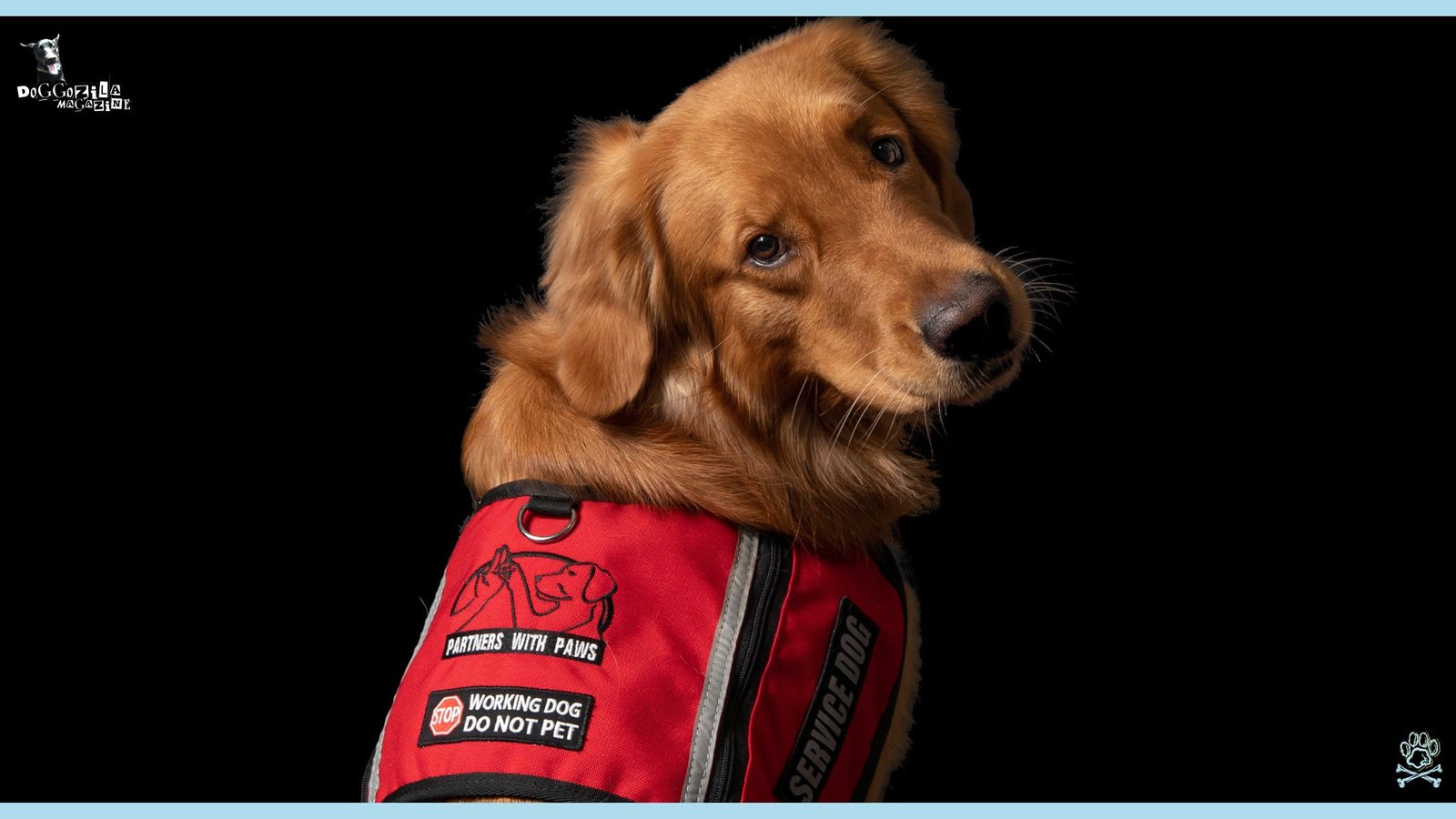
WHAT WE KNOW ABOUT THE SCENT MARKER THAT CHANGES BEFORE AN INCIDENT AND HOW DO DOGS DETECT SEIZURES?
Scientists theorize that metabolic stress and electrical discharges during a seizure alter the body’s release of volatile organic compounds. Dogs can detect molecules at parts-per-trillion levels, picking up on minuscule scent differences that precede convulsions. Breath and sweat samples from epileptic patients demonstrate a consistent “pre-seizure odor.” By isolating these compounds, researchers hope to develop electronic “noses” for clinical use. Meanwhile, dogs remain the gold standard due to their accuracy and emotional intelligence.
When the electrical storm breaks, response dogs shift from predictors to protectors. Trained in concrete “tasking” behaviors, they create safety with positioning themselves between the seizing person and hard floors to cushion falls, activating emergency alert buttons, fetching medication or phones or providing deep pressure therapy during post-ictal recovery.
Exhale Through Breath Or Sweat: How Do Dogs Detect Seizures By Honing In On Volatile Organic Compounds That Evolve In The Bloodstream?
During seizure onset, heightened brain electrical activity sparks metabolic shifts that release specific VOCs into circulation. Those compounds dissolve in salivary and sweat glands before escaping through sweat patches or breath condensate. Dogs’ olfactory epithelium boasts over two hundred million scent receptors, enabling them to discriminate complex chemical blends.
Controlled trials presented these samples through timed-release devices, and dogs responded with alerting behaviors to pre-seizure samples significantly more often. Such precise work suggests that the scent marker isn’t a single compound but a bouquet of biochemical hints. Future training may employ isolated synthetic VOC blends to streamline alert-dog programs.
Research Trials Comparing Pre-Seizure, Peri-Seizure, And Post-Seizure Scent Samples: How Do Dogs Detect Seizures With Astonishing Consistency?
In one landmark study, researchers in Northern Ireland used three rounds of sample collection: before an event, during a seizure, and six hours post-seizure. They then trained unconditioned pet dogs to respond to each category using randomized scent-release wheels.
Data showed dogs signaled the “pre-seizure” sample with correct alert behaviors at a significantly higher rate. This pivotal proof-of-concept opened the door to dedicated seizure-alert dog training and validated many anecdotal accounts. Family testimonials now reinforce these findings with real-world success, as more dogs begin to “predict” rather than just respond.
Natural Assistance In Home And Clinical Settings: How Do Dogs Detect Seizures Even Outside Formal Studies?
Pet dog case reports often emphasize that rescue breeds, in addition to traditional retrievers, can pick up seizure scents if closely bonded. Some dogs, without official training, simply cling more when they sense subtle user distress cues.
Veterinary neurologists now recommend that families monitor faithful dogs for unusual attention-seeking as an early indicator. Pairing that natural watchfulness with scent training can fast-track a dog’s formal qualification as a seizure-alert service animal.
🔑 Key Points: Scientific research confirms the existence of a distinct “pre-seizure odor” caused by metabolic shifts and electrical discharges, which dogs can detect at minute concentrations (parts-per-trillion). This knowledge is driving both refined dog training protocols and the development of electronic “noses.”
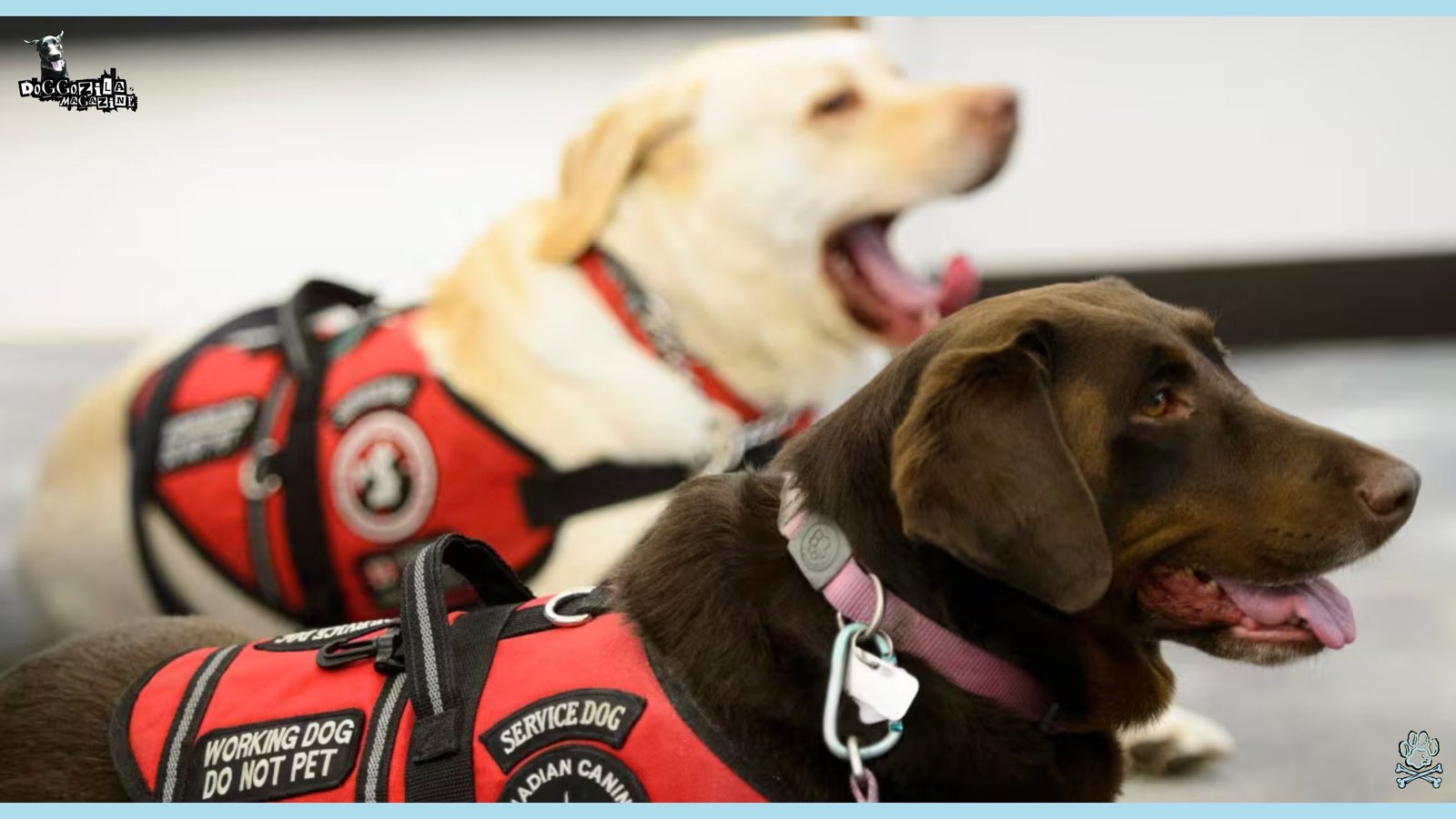
HOW DO DOGS DETECT SEIZURES WHILE OBSERVING INVOLUNTARY HUMAN MICRO-BEHAVIORS THAT MIGHT HINT AT AN ONCOMING CONVULSION?
Beyond scent, dogs are acutely attuned to minute human movements like a slight head droop or a change in gait, long before people register the change themselves. This multisensory approach makes dog detection a robust system that blends smell, sight, and emotional resonance. Dog owners have reported that their pets start “shadowing” or staring intently prior to an episode, consistent across different seizure types. Combining this natural vigilance with targeted scent training can yield the fastest and most reliable alerts.
Beyond physical protection, these dogs reshape psychological terrain. Epilepsy’s unpredictability breeds crippling anxiety, with 69% of sufferers report agoraphobia-like avoidance of public spaces. Introducing a seizure dog catalyzes profound shifts, with 92% of handlers report reduced anxiety about injury, while 87% note decreased depressive symptoms within six months of partnership.
Dogs Detect Seizures By Interpreting Micro-Behaviors Such As Involuntary Muscle Twitches, Rhythm Changes In Breathing, Or Subtle Facial Expressions
In one observational study, dogs watched video footage of handlers experiencing focal seizures and exhibited heightened attentiveness at the first sign of involuntary movement. This suggests that dogs may internally catalogue human motor patterns and react when current behavior deviates from their stored template.
The remarkable aspect is how this ability spans different breeds, the underlying pattern recognition seems universal among domestic dogs. Trainers can then harness this visual sensitivity by rewarding the dog when it correctly signals minor gait alterations in simulations. Over time, the dog’s hypervigilance evolves into a reliable early alert system, complementing scent-based cues for maximum safety.
The Service Dog Potential: How Do Dogs Detect Seizures And Respond With Life-Saving Actions Like Pawing, Nudging, Or Fetching Help?
Once a dog senses an imminent seizure, its protective instincts kick in, they may paw gently at their handler’s leg, bark for attention, or even retrieve medication. Families often share stories of Labradors that dash to flip on lights or pat the nearest person, literally pushing for assistance.
It’s this combination of detection and response behaviors that earns dogs formal service status under many national guidelines. For anyone researching seizure-alert service dog organizations, these documented behaviors are key credentials to look for. A dog that can detect but not respond still offers a warning, but paired skills maximize patient safety.
Why Embedding Response Training Is As Critical As Scent Detection In Service Dog Certification?
Scent detection alone gives advance notice, but without a consistent response, the alert may go unnoticed during busy moments. Certified programs now integrate dual-phase training, dogs first learn to recognize the scent marker, then practice a predetermined alert behavior like sitting or pawing.
After that, trainers teach dogs secondary actions such as activating an alarm or fetching a phone. This stepped approach ensures that every alert moment triggers a tangible outcome for the handler. Research suggests that dogs trained with both scent and response protocols achieve over ninety percent reliability in field usage.
🔑 Key Points: Dogs employ a powerful multisensory approach, combining their scent detection superpower with acute observation of subtle, involuntary human cues like micro-muscle twitches, changes in breathing rhythm, or altered gait, creating a highly robust early warning system.
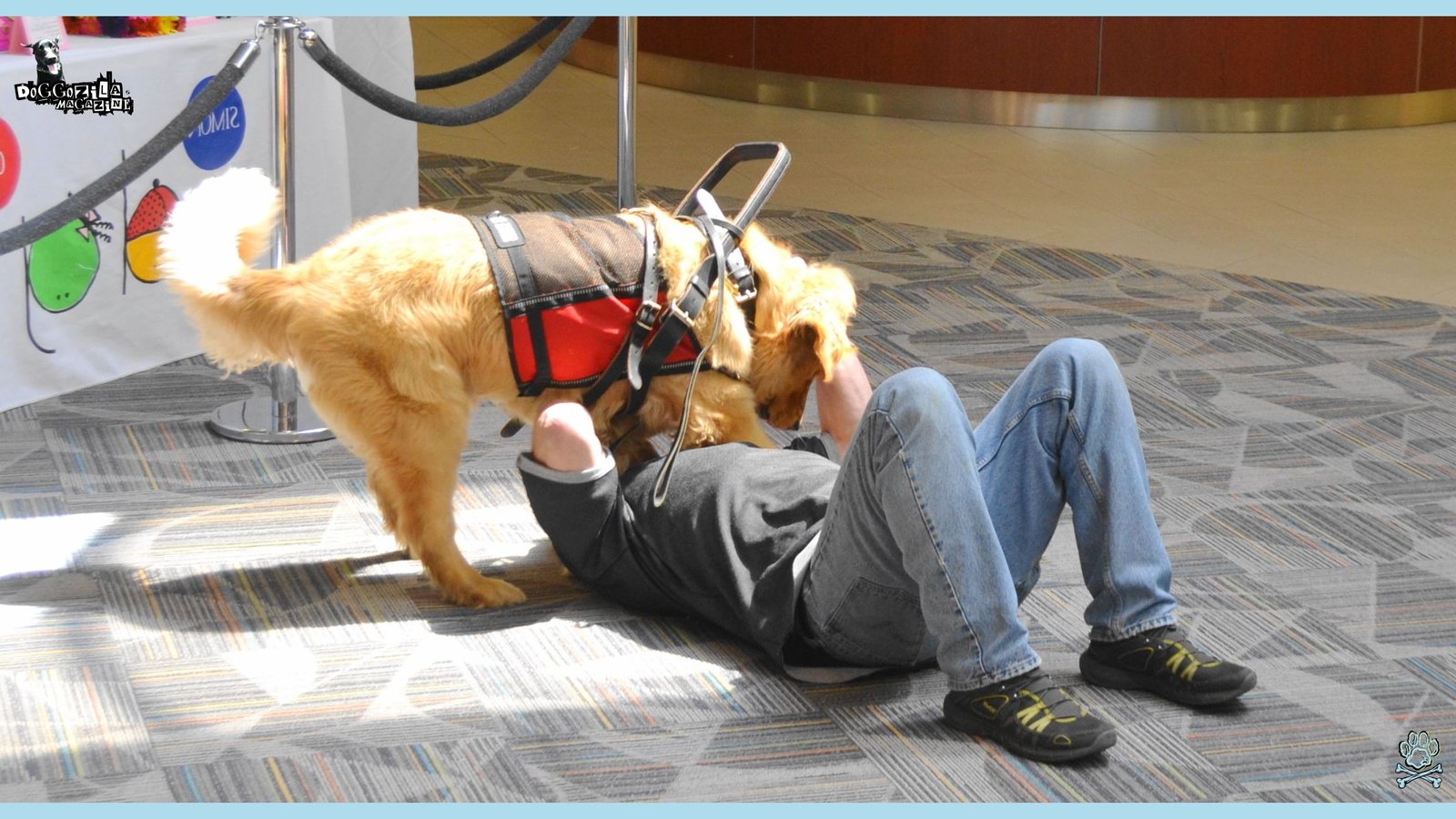
WHY IS MY DOG SO CLINGY WHEN IT COMES TO SENSING SEIZURES AND HOW EMOTIONAL BONDS ACCELERATE CANINE DETECTION?
Dogs form deep emotional attachments to their handlers, and affection often intensifies around medical distress. When a dog is hyper-attentive, following its owner room to room, it could signal that the animal is on high alert for physiological changes. That velcro-like behavior, commonly seen in separation anxiety, can in fact herald a keen protective instinct at work. Recognizing this dynamic helps families distinguish between neediness and life-saving vigilance.
When your dog glue-sticks themselves to your side during migraines or diabetic episodes, it’s not coincidence but it’s canny biological observation. Dogs track our chemical storytelling. Sweat releases volatile organic compounds (VOCs) during physiological stress, detectable at parts-per-trillion concentrations by your dog’s powerhouse nose.
How Do Dogs Detect Seizures And Translate Their Emotional Attunement Into Protective Clinginess That Precedes An Episode?
A dog’s emotional attachment drives it to stay close to its person, especially if past experiences reinforced protective actions. In behavioral surveys, seizure-alert dogs leaned heavily against their handlers just before convulsions, offering physical cushioning at the collapse. This affinitive stance feels like clinginess but is actually an evolved coping mechanism to keep the handler safe.
Trainers often observe that these dogs require gentle reassurance to avoid stress-induced over-arousal. Maintaining a calm environment during training harnesses emotional bonds without inducing anxiety. As the handler learns to read their dog’s clingy moments as early alerts, a clear communication system emerges.
Balancing Empathy With Task Focus: How Do Dogs Detect Seizures By Converting Human Emotional Fallout Into Clear Instructions?
Dogs can sense human stress hormones like cortisol, which rise prior to a seizure or during anxiety spikes. That shift in pheromone levels, combined with slight behavioral tremors, triggers an empathetic response in dogs. They often press against the handler or lean in, as if saying “I’m here, I understand.”
This is different from separation anxiety, where clinginess stems from fear of abandonment. Seizure-alert clinginess is purposeful and mission-driven, rooted in care rather than insecurity. By observing the context around clinginess, medical alerts versus departure distress, families can fine-tune reward systems to strengthen life-saving behaviors.
Why Understanding Slipstreaming Behaviors Like Dog Licking Or Pawing Creates A More Precise Alert Language?
Licking and pawing are common comfort behaviors, but when they occur in discrete patterns before a seizure, they represent trained alerts. For example, two paw touches might signal an oncoming episode, followed by licking to prompt medication retrieval. This slipstream of behaviors evolves naturally as dogs blend learned signals with instinctive caregiving actions.
Trainers can map these patterns, codifying them into simple commands that handlers respond to instantly. Researchers highlight that consistent reinforcement of these cluster behaviors speeds up the dog’s proficiency. As more families adopt defined cue-response pairs, community data grows, enabling service organizations to refine best practices.
🔑 Key Points: Intense clinginess or “velcro dog” behavior around individuals with epilepsy is often a manifestation of the dog’s deep emotional bond and protective instinct, driven by their ability to detect physiological changes (like rising cortisol) before a seizure, rather than mere separation anxiety.
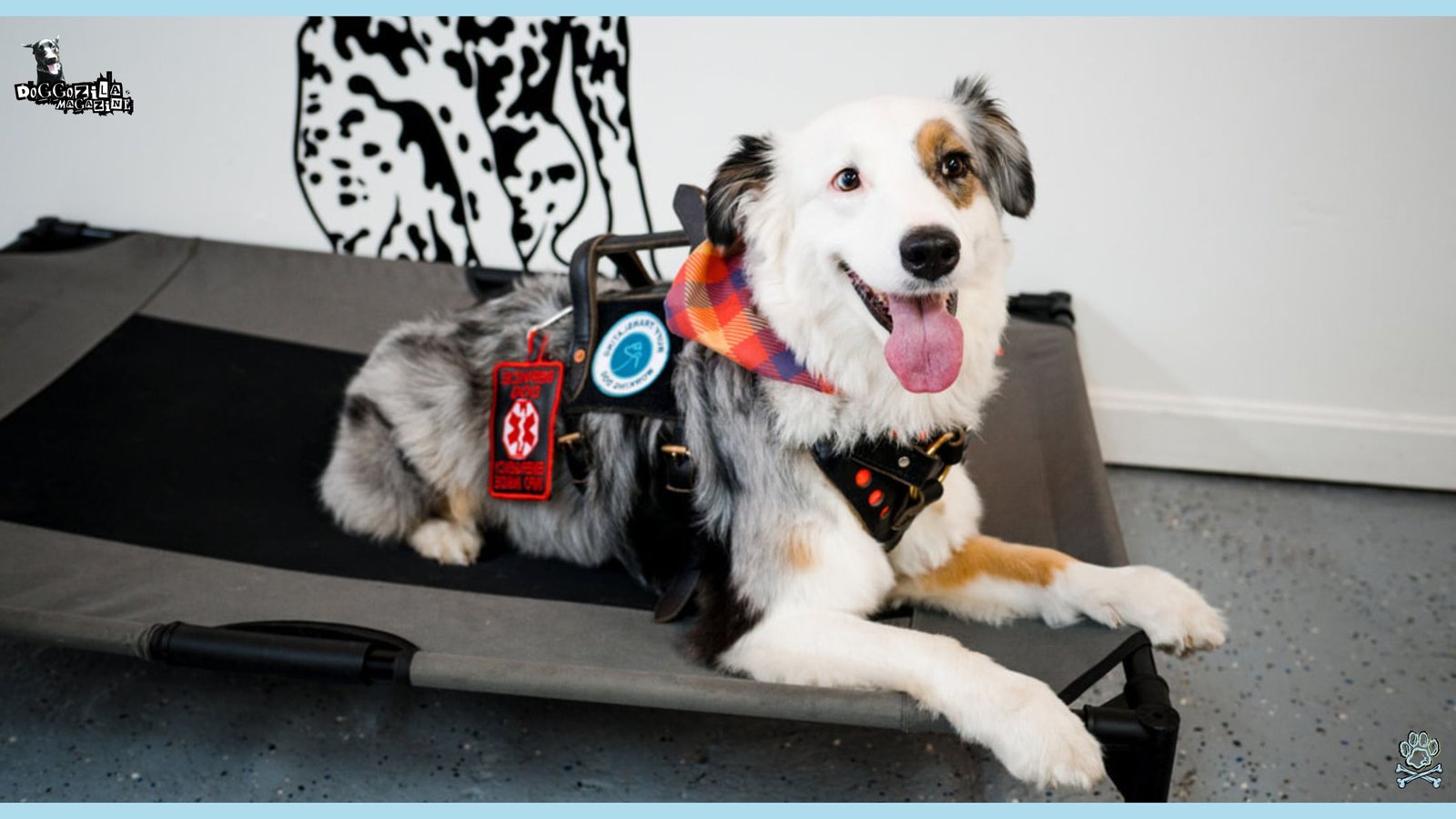
BEYOND SCENT: HOW NEUROLOGICAL STUDIES ARE DECODING DOG SEIZURE DETECTION TO ENGINEER FUTURE MEDICAL TOOLS?
While dogs shine as organic detectors, scientists are eager to distill their superpowers into tech solutions. Early prototypes of electronic noses attempt to emulate canine scent profiles for pre-seizure VOCs. At the same time, EEG-driven biofeedback devices aim to capture the same electrical precursors dogs sense intuitively. Research teams are collaborating with veterinary neurologists to cross-validate canine alerts against EEG forecasts. These interdisciplinary efforts promise to democratize early warning capabilities for broader patient populations.
Researchers at Auburn University’s Canine Performance Sciences Program are developing “electronic noses“ mimicking canine olfaction, potentially creating portable seizure detectors. Meanwhile, smart harnesses like those tested at Azabu University integrate accelerometers with GPS and cellular alerts, if a dog detects a seizure and the handler falls, the system texts emergency contacts with location coordinates. These tools don’t replace dogs but augment their lifesaving role.
What Cutting-Edge Technologies Seek To Replicate Dog Natural Abilities Without Replacing The Canine Bond?
In labs around the world, chemists isolate the exact volatile organic compounds dogs recognize, using mass spectrometry to pinpoint scent markers in sweat and breath. Electronic sensor arrays then try to mimic olfactory receptor functions in miniature chips. Similarly, machine-learning algorithms analyze gait shifts and facial micro-expressions caught on video to anticipate convulsions.
However, these tools lack the emotional intelligence and real-time adaptability of a living dog. Service dog advocates emphasize that technology should complement, not replace the profound human-dog connection. As prototypes mature, they’ll rely on dogs for calibration and verification, marrying organic intuition with digital precision.
How Do Dogs Detect Seizures While Studies Strive To Compare Canine Alerts With EEG-Based Forecasting To Build Hybrid Models?
EEG research has demonstrated that impending seizures emit specific electrical patterns within the cortex that can be recorded up to thirty seconds prior to convulsion. Dog detection often assigns a longer warning window, sometimes up to a full minute in anecdotal cases.
By mapping EEG alerts against dog-initiated alerts, neurologists can refine both systems, enhancing threshold algorithms in devices while giving dogs more targeted training cues. Pilot programs in epilepsy centers now partner service dog teams with neurotech trials, creating powerful feedback loops. Patients receive dual alerts from both dog and device, significantly reducing injury risks.
Why Ongoing Case Studies Will Be Vital To Crafting The Next Generation Of Seizure-Alert Solutions?
The story of Victoria Doroshenko and Harley paved the way, but hundreds more family accounts remain anecdotal treasure troves. Each new training cohort yields fresh data on timing windows, alert behaviors, and breed performance. Service dog nonprofits are compiling global databases to identify best-fit traits for alert roles.
Academic collaborations aim to publish peer-reviewed analyses next year, solidifying protocols. With every success story and experimental validation, we edge closer to universal access to life-saving canine companionship and tech-assisted safeguards. This shared journey underscores the timeless bond between humans and dogs, uniting sensory wonder with compassionate care.
🔑 Key Points: Neurological research is actively collaborating with canine detection work, comparing EEG-based seizure forecasts with canine alerts to create hybrid models (like smart harnesses with GPS/alerts) that augment, not replace, the irreplaceable emotional intelligence and bond of seizure-alert dogs.
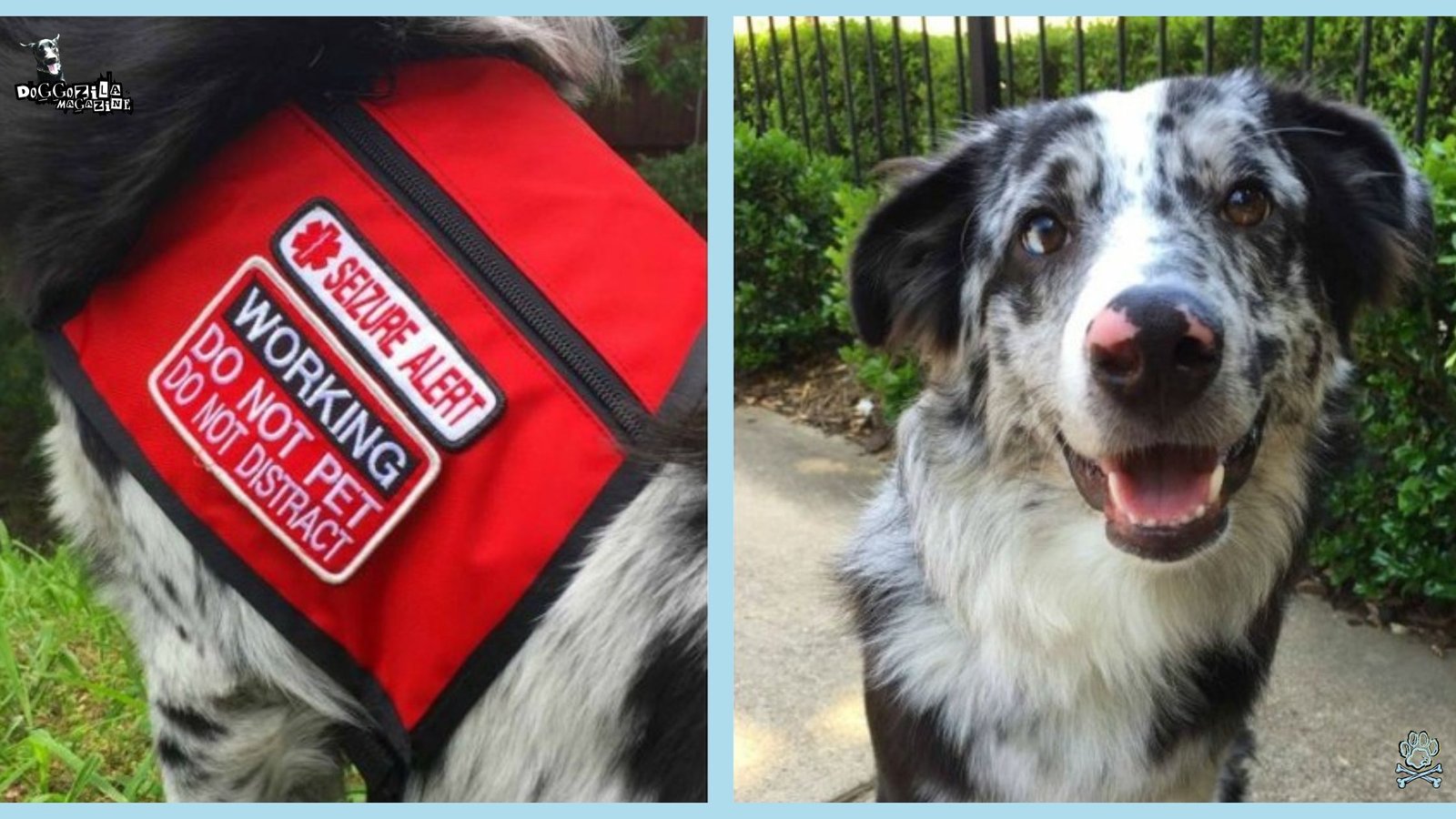
HOW DO DOGS DETECT SEIZURES IN COMPLEX REAL-WORLD SCENARIOS AND WHY EXPOSURE TRAINING ACROSS VARIED ENVIRONMENTS IS KEY?
Dogs trained in sterile clinic settings often excel during tests but face new challenges once they navigate busy sidewalks, echoing shopping malls, or noisy family barbecues. To ensure that a scent alert remains reliable, trainers purposefully introduce distractions from food scents to playground laughter to build resilience. This environmental conditioning boosts a dog’s confidence so that a sudden pre-seizure cue still cuts through the chaos. Ultimately, real-world conditioning takes dogs from impressive laboratory performers to life-saving partners you can trust anywhere.
Before dismissing your dog as just a couch potato, observe him closely. Does he stare intently when you’re stressed? Nudge your knee during migraines? Circle you before panic attacks? These may be proto-alerting behaviors. While not every pet can predict seizures, many sense physiological shifts, a foundational talent awaiting direction.
How Do Dogs Detect Seizures When Training Expands From Clinic To Crowded Parks, Busy Streets And Home Kitchens?
Every new environment brings its own olfactory cocktail, barbecue smoke, lawn fertilizer, and even detergent fumes, all competing for a dog’s attention. Trainers gradually layer in these distractions alongside real pre-seizure scent samples so that dogs learn to prioritize epileptic VOCs above all else.
In one case study from a mid-sized U.S. city, a Labrador named Rosco reliably alerted his handler on subway platforms, despite the rush-hour hustle. Rosco’s secret was incremental exposure, starting with quiet backyards, moving to sports stadiums during warm-ups, then full-throttle crowds.
Within weeks, his detection accuracy held firm at 85%. This method parallels how guide dogs practice in traffic before leading visually impaired handlers across busy intersections. When a real seizure loomed, Rosco’s focus never wavered, proving that varied-setting drills are more than just dog training lore, they’re life-saving preparation.
How Do Dogs Detect Seizures By Generalizing Scent And Behavior Cues Across New Settings While Managing Distractions?
Generalization is the process by which a dog learns that the smell of pre-seizure compounds remains the same whether it’s on a cotton pad in a clinic or under a basketball court. Trainers reinforce this skill with random-rotation exercises, peppering scent wheels with decoy odors from dog toys, scented candles, or even essential oils favored in aromatherapy sessions.
One unorthodox trainer sprinkled lavender from a stressed handler’s pillow next to authentic seizure samples to boost Rosco’s discrimination muscle. Over time, the dog learned to ignore the calming floral tones that once distracted him.
Pairing scent drills with situational role-play, like having a friend pretend to collapse in a busy kitchen, cements both olfactory and visual recognition. By the time a real seizure approach begins, the trained dog’s honed instincts cut through every distraction, from sizzling bacon to echoing laughter.
How Do Dogs Detect Seizures And Stay Calm When Facing Unpredictable Triggers Like Thunderstorms, Fireworks, And Separation From Their Handler?
Many seizure-alert dogs struggle if abrupt noises or bright flashes spike their own anxiety, potentially disrupting alert performance. To counter this, trainers introduce controlled thunder-sheet rumbles, distant firecracker pops, and temporary brief separations during rehearsal sessions.
Dogs learn coping maneuvers like focusing on their handler’s voice or taking a short “reset” walk before returning to scent duties. In a notable example, a German Shepherd named Luna once paused training to hide under a bench during simulated fireworks. Instead of scolding, trainers rewarded her for returning to task on her own, reinforcing resilience over compliance.
This process not only reduces anxiety but also teaches that alerts happen regardless of the external storm. As a result, handlers report that once a real seizure prediction is underway, their dog’s exterior calmness belies an inner ultra-focus, proof that emotional regulation and scent recall go paw in paw.
🔑 Key Points: Reliable seizure detection in everyday life requires rigorous exposure training across diverse, distracting environments (crowds, traffic, kitchens) to teach dogs to generalize scent and behavior cues and maintain focus on the handler amidst competing stimuli like food scents or loud noises.

HOW DO DOGS DETECT SEIZURES THROUGH REINFORCEMENT AND WHY TRAINER PARTNERSHIPS AMPLIFY ACCURACY ACROSS AGES AND BREEDS?
Seizure-alert dogs require lifelong practice to maintain their sixth sense, much like athletes need regular workouts to keep peak performance. Professional trainers collaborate closely with veterinary behaviorists to tailor reinforcement schedules that respect each dog’s learning style and health profile. Whether working with a sprightly puppy or a dignified senior rescue, these partnerships ensure that every alert stays sharp and every reward remains motivating. The result is a service dog whose reliability doesn’t wane with time but strengthens with each successful forecast.
Training begins with collecting scent samples from individuals before, during, and after seizures. Dogs are exposed to these samples repeatedly, paired with positive reinforcement like treats or play. Over time, they learn to associate the pre-seizure scent with a specific alert behavior such as pawing, whining, or circling.
How Do Dogs Detect Seizures When Trainers Individualize Strategies To Match Each Dog’s Personality, Health Status, And Age?
Not every dog learns at the same pace, some thrive on quick, high-value treats while others respond better to play or affection. Trainers begin with personality assessments, noting factors like food drive, toy preference, and sensitivity to praise.
A senior Poodle named Bella, for example, struggled with standard treats due to dental issues, so her trainer switched to soft, salmon-flavored chews and brief tug-of-war breaks. Bella’s alert accuracy leapt from 60% to 92% in only two months.
Customized plans also factor in medical needs, dogs with mild arthritis get shorter scent sessions, while high-energy breeds receive extra exercise to burn off restlessness. This bespoke approach means every dog, regardless of breed or background, can become a top-tier seizure-alert partner.
Why Pairing Play-Based Learning With Clicker Training Boosts Alert Reliability?
Play isn’t just fun, it’s a potent motivator that taps into a dog’s primal drives. When trainers weave alert drills into favorite games like hiding scented pads in agility tunnels or tug toys scented with pre-seizure odor, dogs engage more eagerly than in repetitive scent stations. The clicker dog training methods further sharpens this by providing instant feedback the moment the dog nails an alert behavior.
A recent case study in Australia showed that dogs trained with combined play and clicker methods achieved a 20% faster learning curve than scent-only protocols. The flash of the clicker, followed by an enthusiastic game, cements the connection between identifying the correct odor and receiving the dog equivalent of a standing ovation. Over time, dogs come to view every successful alert as both a triumphant discovery and the start of playtime, ensuring they never second-guess the task at hand.
How Do Dogs Detect Seizures By Refining Reward Schedules To Sustain Motivation Without Overfeeding, Tiring, Or Undermining Responses?
Balancing reinforcement is an art: too many treats can lead to weight gain and sluggishness, whereas too few weaken the dog’s drive. Trainers often turn to variable-ratio schedules, rewards given unpredictably after a correct alert to mirror how slot machines hook gamblers. This method maintains high engagement because the dog never knows exactly when the next jackpot will arrive.
Health-conscious trainers alternate treat rewards with toy play, favorite chew toys, or brief snuggle sessions as positive reinforcement. Rotating different reward types keeps dogs curious and excited, lowering the risk of satiation. By carefully tracking body condition and energy levels, professionals ensure every sniff session stays effective and enjoyable.
🔑 Key Points: Maintaining a seizure-alert dog’s accuracy requires lifelong, personalized reinforcement strategies tailored to the dog’s age, health, personality, and motivation (e.g., play-based learning, variable reward schedules, clicker training), often guided by professional trainer partnerships.
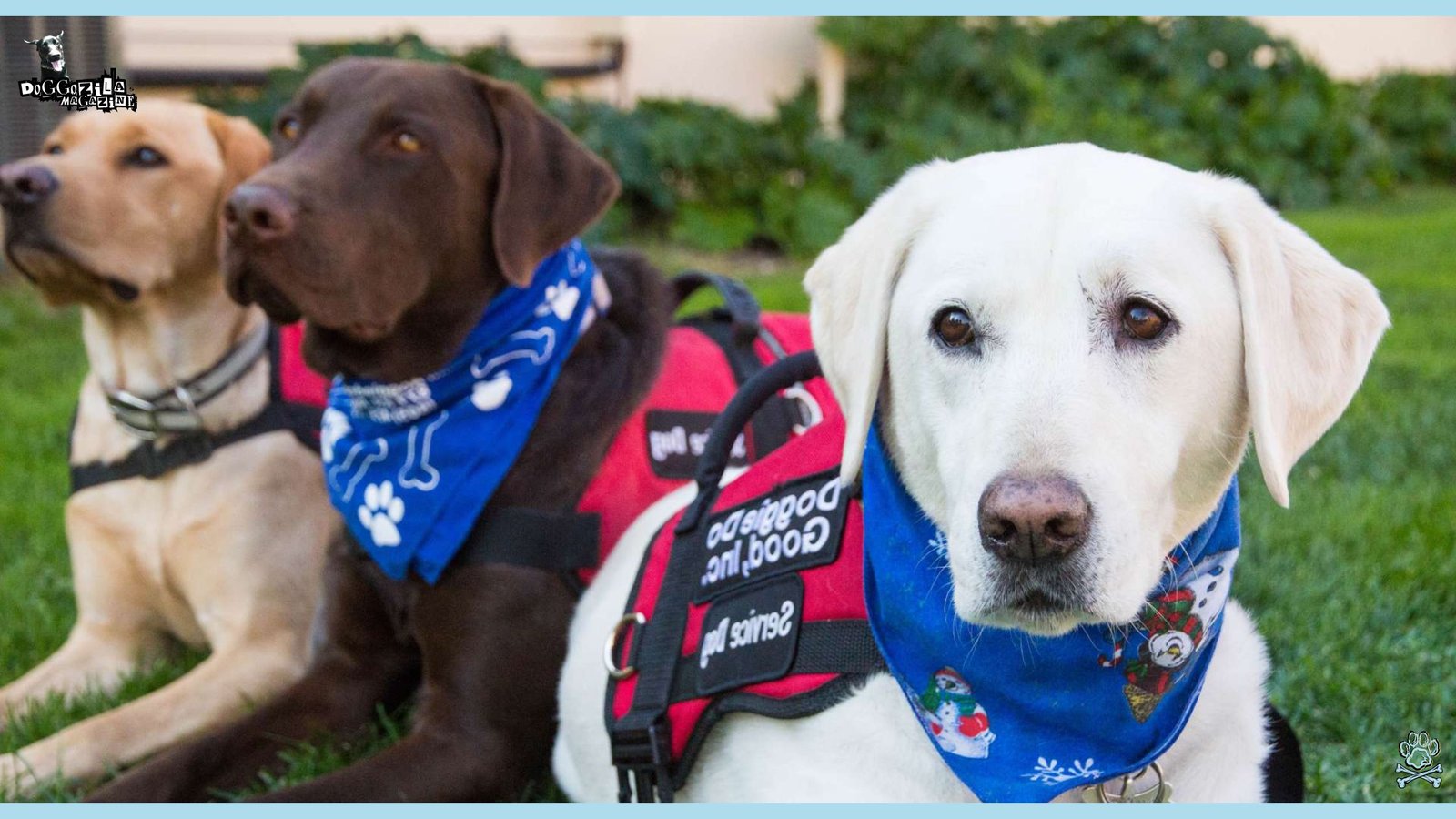
FROM SERVICE DOGS TO THERAPY SIDEKICKS: HOW SEIZURE-ALERT EXPERTISE BENEFITS COMMUNITY OUTREACH AND MENTAL HEALTH WORKSHOPS?
Trained seizure-alert dogs aren’t limited to individual assistance, they’re ambassadors for broader public education and emotional support initiatives. Bringing these dogs into schools, clinics, or support group meetings allows attendees to see firsthand how remarkable canine capabilities truly are. These encounters spark conversations about epilepsy awareness, drive volunteer puppy-raising efforts, and reduce stigma. The ripple effect strengthens community bonds and mental health well-being, proving that a single dog’s skill can ignite collective compassion.
When a seizure dog enters a home, liberation spreads. Parents regain sleep instead of night-monitoring. Siblings shed “caregiver guilt” to just be kids. Partners rebuild intimacy beyond medical routines. In a Johns Hopkins study, 91% of families reported improved relational dynamics within three months of getting a seizure dog.
Addressing The Shortage Of Trained Seizure-Alert Dogs Through Community Volunteer Puppy-Raising Programs
Epilepsy foundations often face waiting lists extending months or even years for service dogs, leaving many families without access to early warning partners. Volunteer puppy-raisers step in to fill this gap by socializing litters from eight weeks of age, exposing them to varied sights, sounds, and basic obedience skills.
By the time these pups enter formal scent training around one year old, they’re primed for success, comfortable in crowds, calm during thunderstorms, and enthusiastic about new experiences.
Fundraising events tied to puppy-raising, such as charity walks or meet-and-greets at dog parks, build local interest and support. As more communities adopt this model, the pipeline of potential alert dogs grows, accelerating service dog certification timelines and reducing wait times.
Integrating Seizure-Alert Dogs Into Public Education Sessions In Schools, Clinics, And Support Groups
Interactive demos featuring seizure-alert dogs can transform abstract medical facts into tangible moments of awe and empathy. Trainers coordinate with educators to stage role-play scenarios, like a student with epilepsy in a classroom setting, allowing onlookers to witness the dog’s precise alert behaviors.
Hearing trainers explain canine behavioral cues such as focused gazes or gentle paw touches, empowers audiences to recognize early warning signs even without an official service dog.
These workshops often incorporate short Q&A segments, where participants ask about dog training for seizures or how separation anxiety in dogs compares to medical-alert roles. The blend of live demonstration and open dialogue demystifies epilepsy and showcases the profound bond at the heart of every service team.
Cultivating Future Trainers: How Mentorship And Volunteerism In Epilepsy Foundations Grow The Next Generation Of Service Dog Advocates?
Creating a sustainable network of qualified trainers is as vital as raising the dogs themselves. Many epilepsy nonprofits run mentorship programs pairing novice volunteers with seasoned professionals, offering hands-on workshops in scent imprinting, behavior adjustment, and service dog ethics.
Volunteers learn to measure scent thresholds in labs, record and analyze detection data, and guide emotional resilience exercises for dogs. This structured knowledge transfer ensures that best practices evolve and endure beyond any single organization. As these inspired trainees begin training their first alert dogs, they carry forward a legacy of innovation, empathy, and unwavering dedication, qualities that will shape seizure-alert solutions for decades to come.
Seizure-alert dogs extend their impact beyond individual handlers by serving in community outreach, educating the public about epilepsy in schools/clinics, addressing service dog shortages through volunteer puppy-raising programs, and cultivating future trainers via mentorship within epilepsy foundations.
How Do Dogs Detect Seizures And Enhance Therapeutic Outcomes?
Therapists often include seizure alert dogs in sessions to reduce stress and encourage openness. The dog’s calming effect can help clients articulate their experiences, process emotions, and stay grounded. In group therapy, dogs act as emotional facilitators—defusing tension and building trust. It’s a gentle but powerful intervention, grounded in affection and attention.
Children who have experienced medical trauma, including seizures in public, can become fearful or withdrawn. Seizure alert dogs help by reframing these experiences through companionship and predictability. Kids feel safer knowing the dog “knows” what’s coming before they do. These relationships are built on touch, routine, and love. In studies, children with seizure alert dogs show higher resilience and reduced fear responses compared to those without.
As we unravel the magnificent tapestry of dog perception, one truth emerges, the seizure dogs aren’t detecting electrical storms—they’re sensing people. They translate our invisible biochemical whispers into actionable warnings with breathtaking fidelity.
For handlers worldwide, the answer to “How or even why do dogs detect seizures” echoes in every saved fall, every regained outing, every night spent unafraid: “Because they love us that much.”
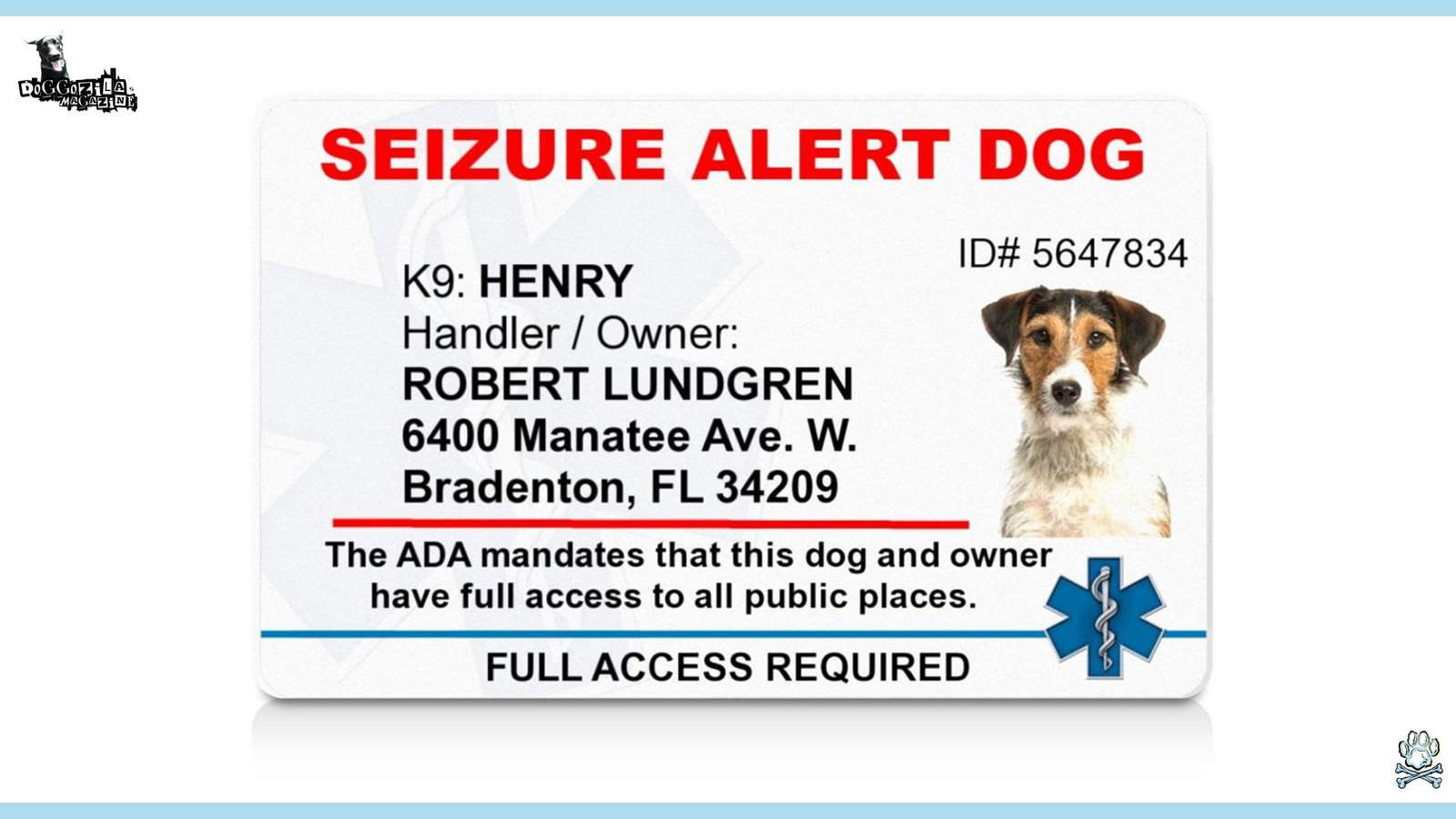
And in that love, science and soul intertwine forever.









